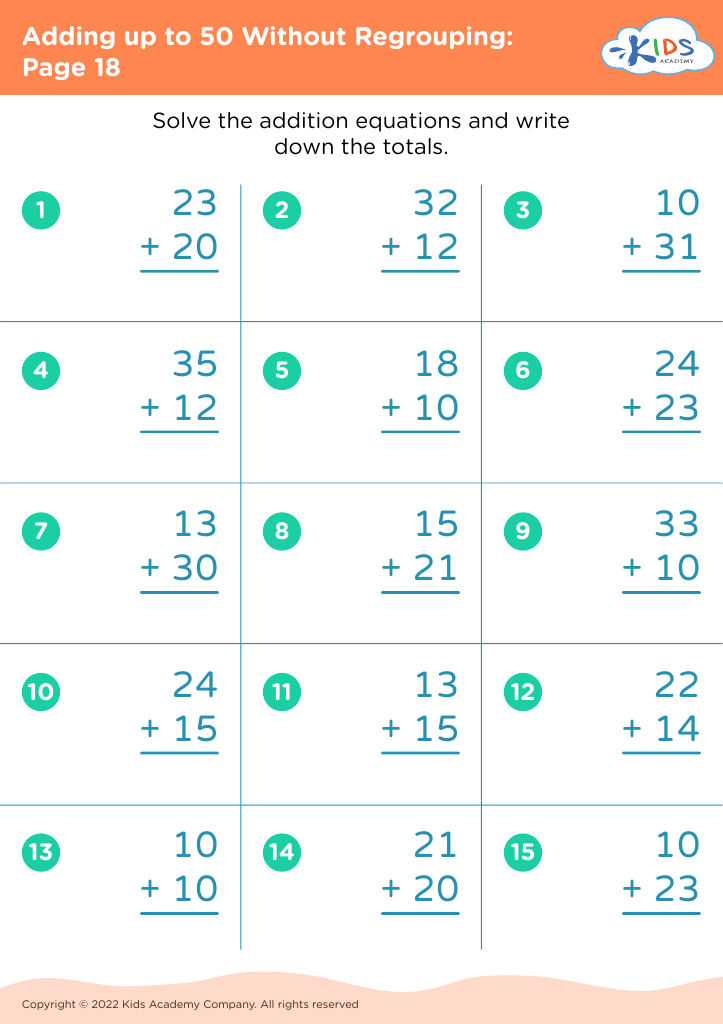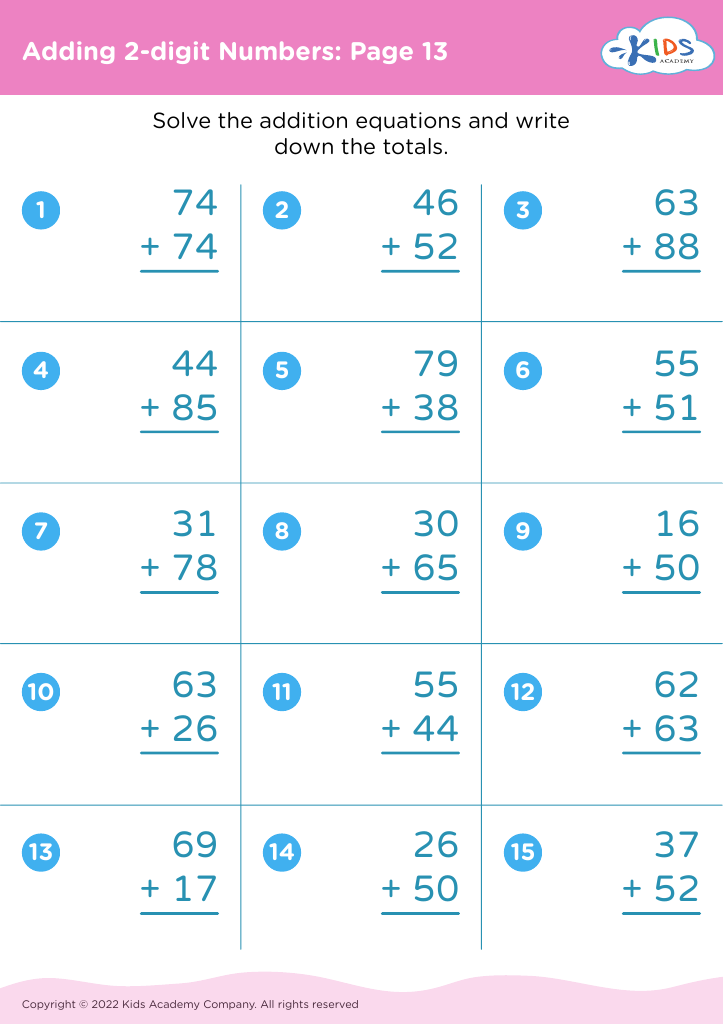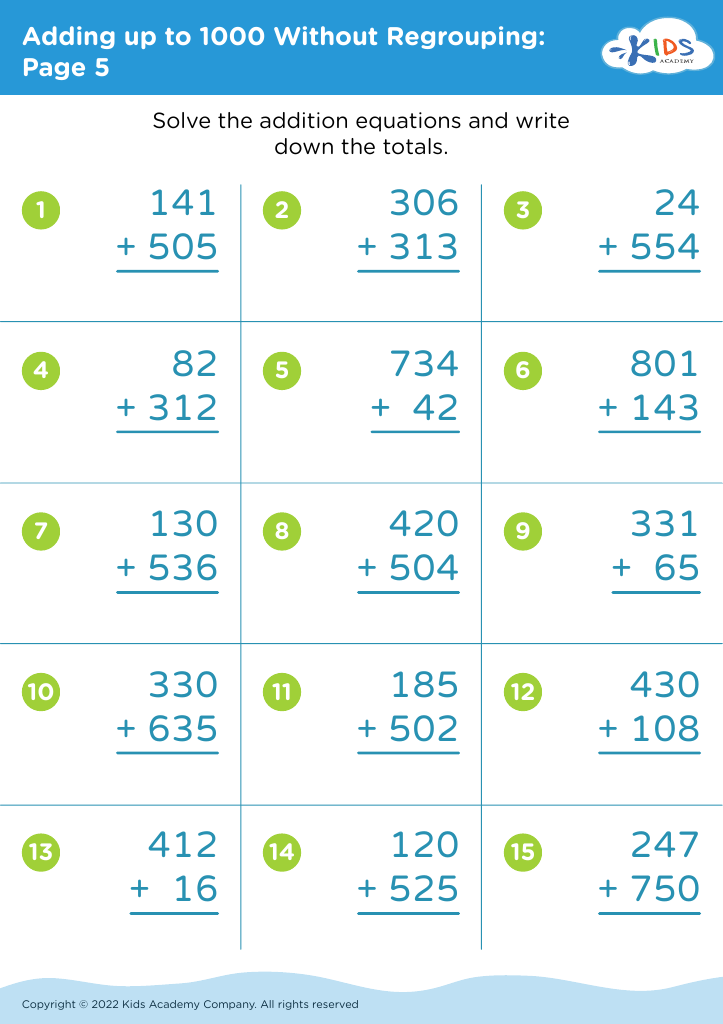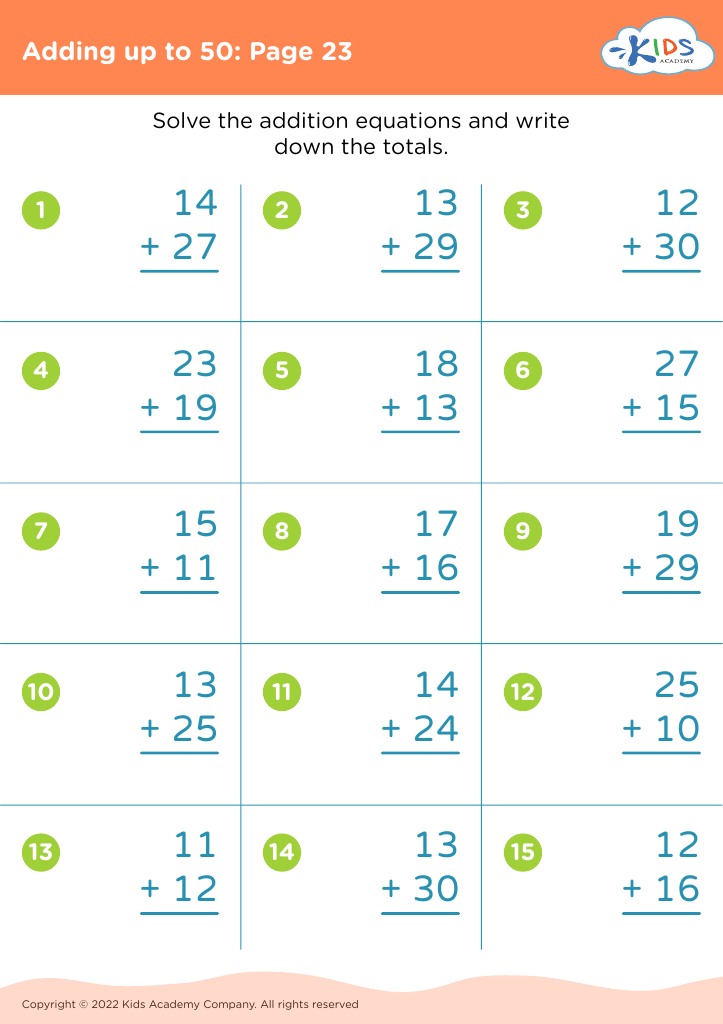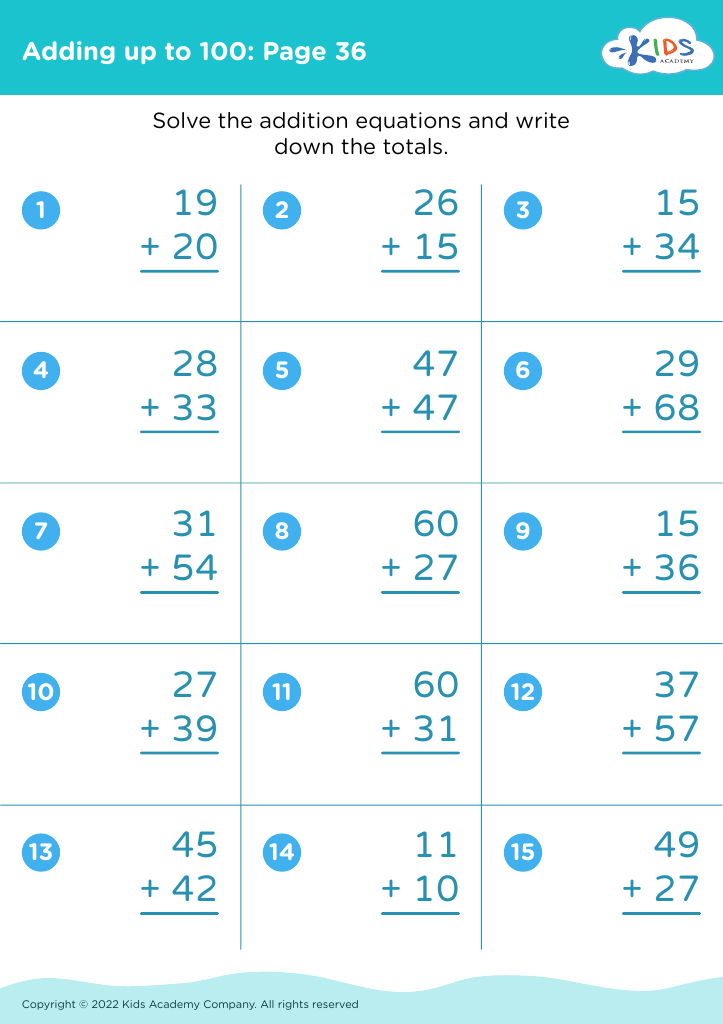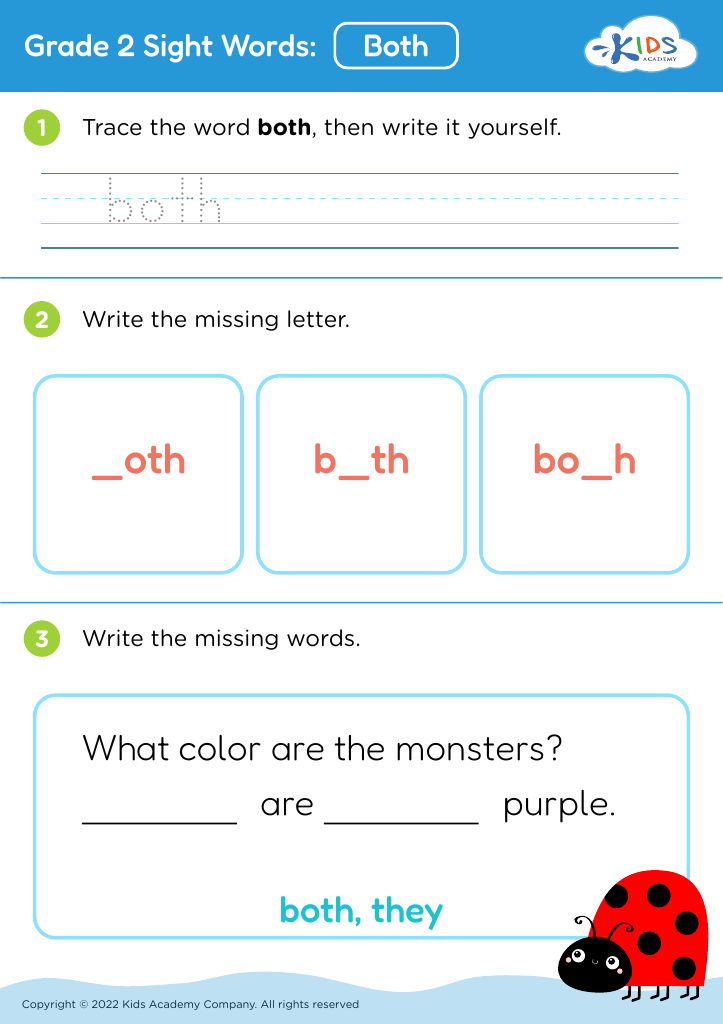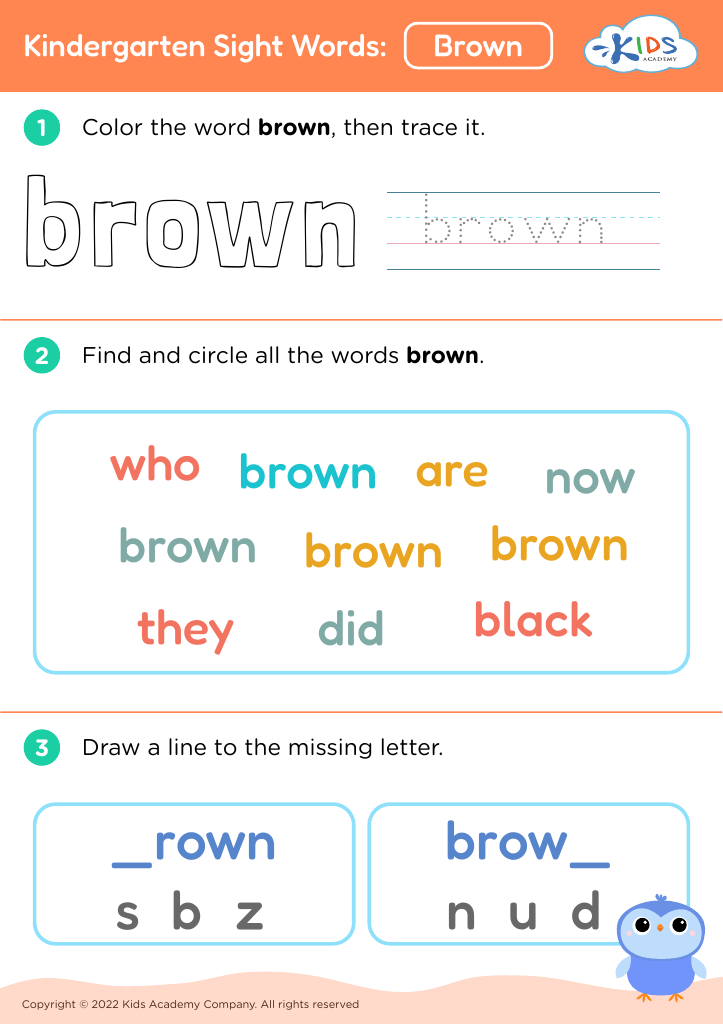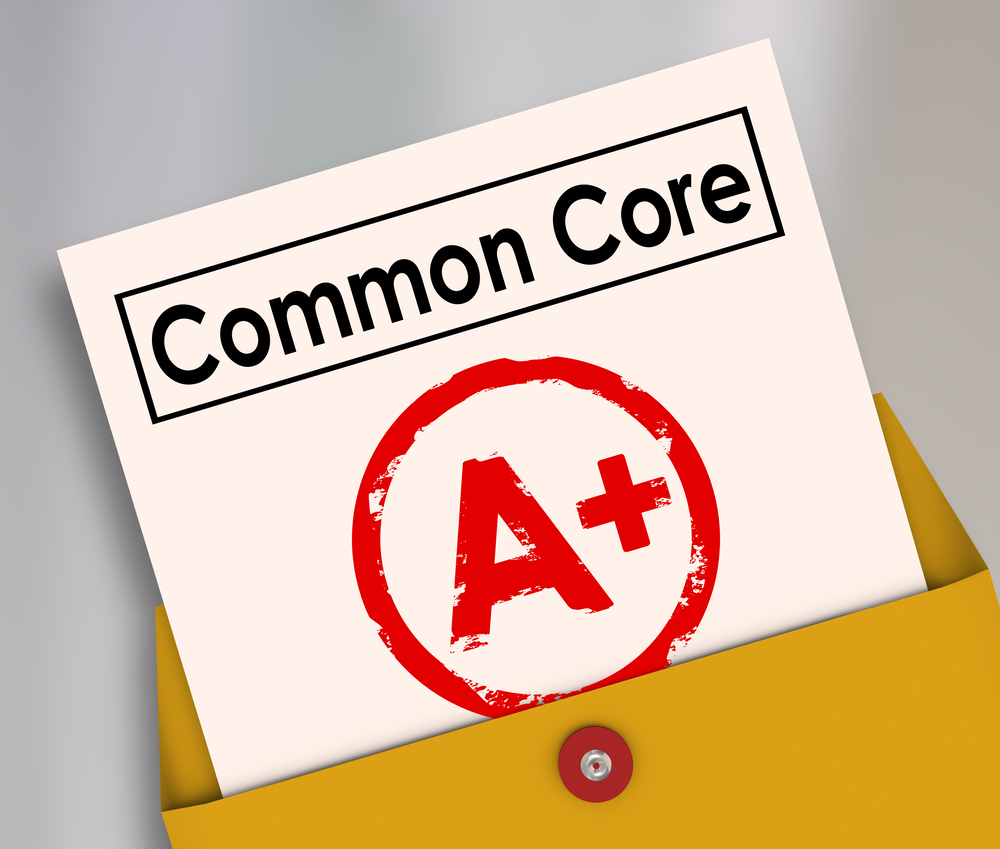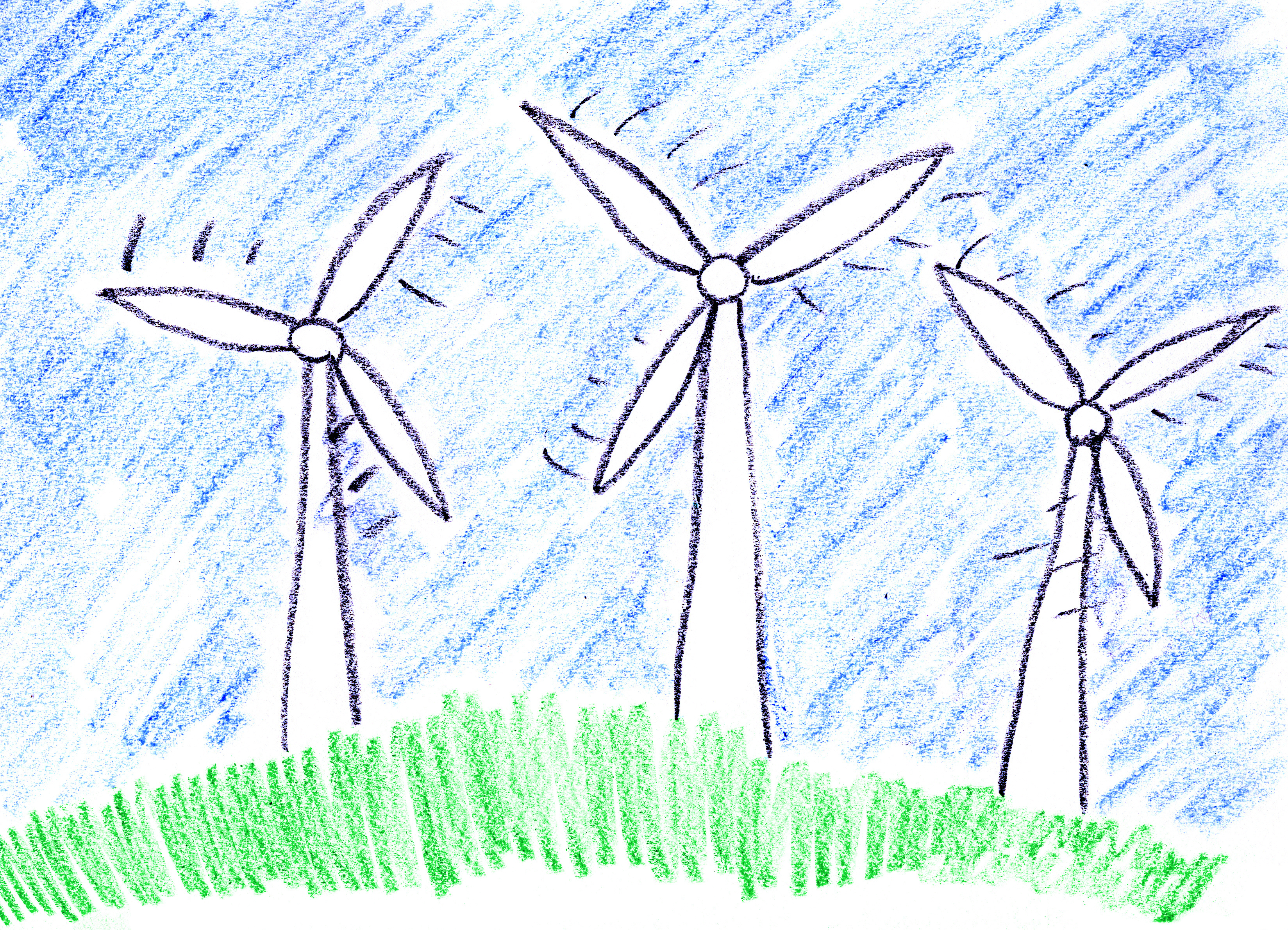Visual representation comprehension Worksheets for Ages 3-7
10 filtered results
-
From - To
Unlock your child's potential with our Visual Representation Comprehension Worksheets for ages 3-7, designed to build essential cognitive skills. These engaging, age-appropriate worksheets, created by education experts, combine fun visuals with interactive tasks to help young learners understand and interpret visual information effectively. Whether distinguishing shapes, recognizing patterns, or solving picture-based puzzles, these worksheets foster critical thinking and problem-solving abilities in early childhood. Ideal for both classroom use and at-home practice, our printable resources ensure that learning becomes a joyful adventure. Equip your child with the tools they need to excel through visual comprehension!
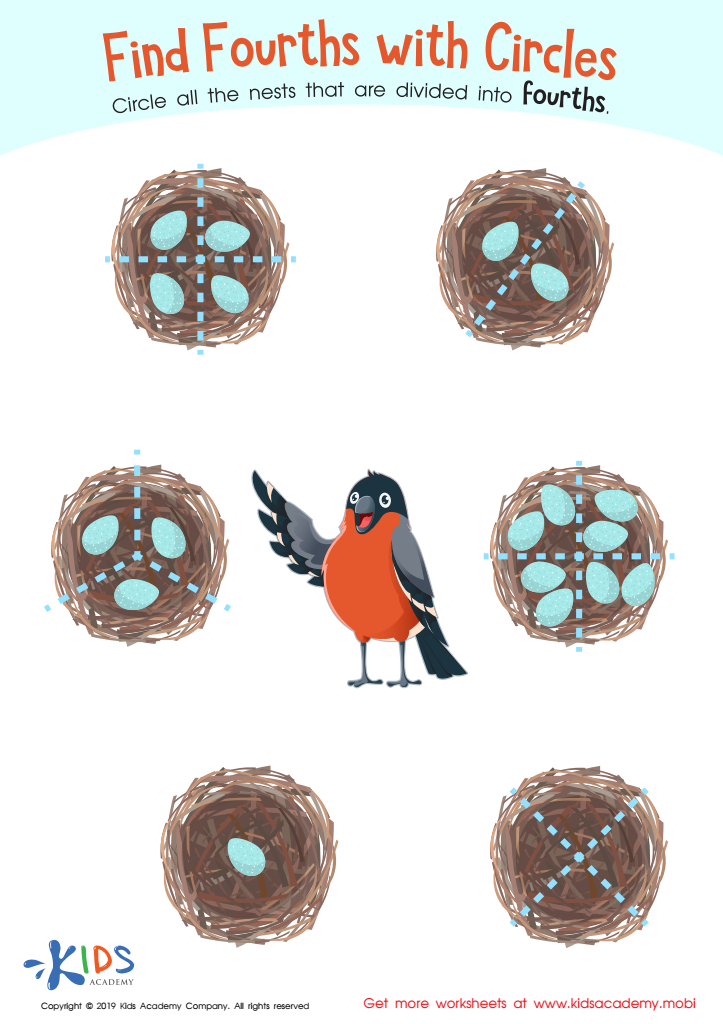

Find Fourths Circles Worksheet
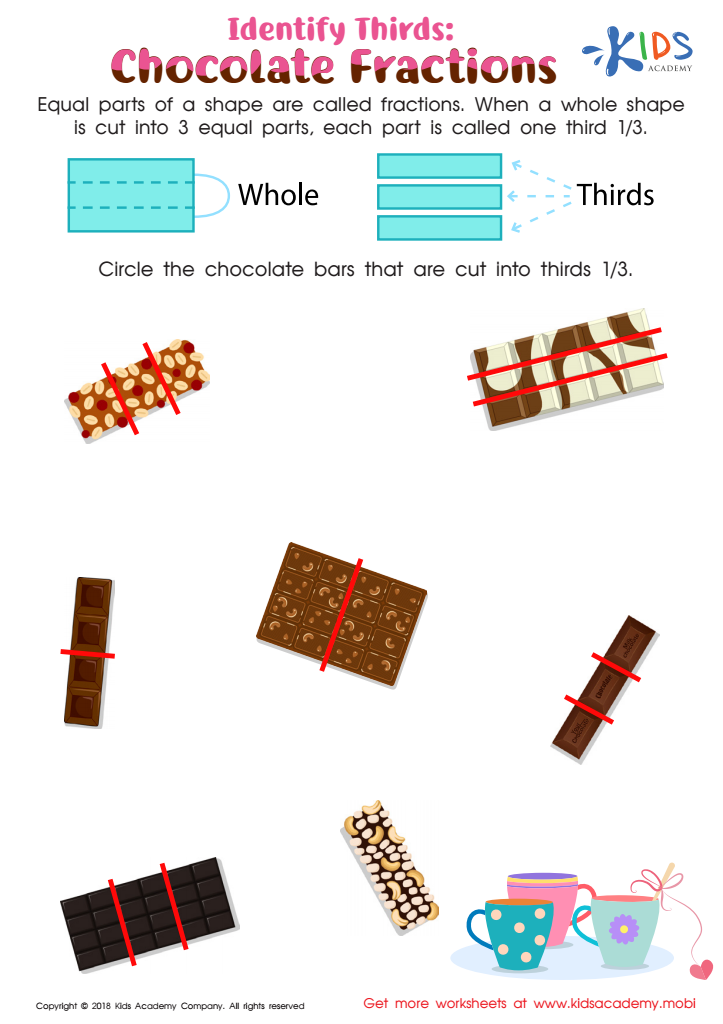

Identify Thirds: Chocolate Fractions Worksheet
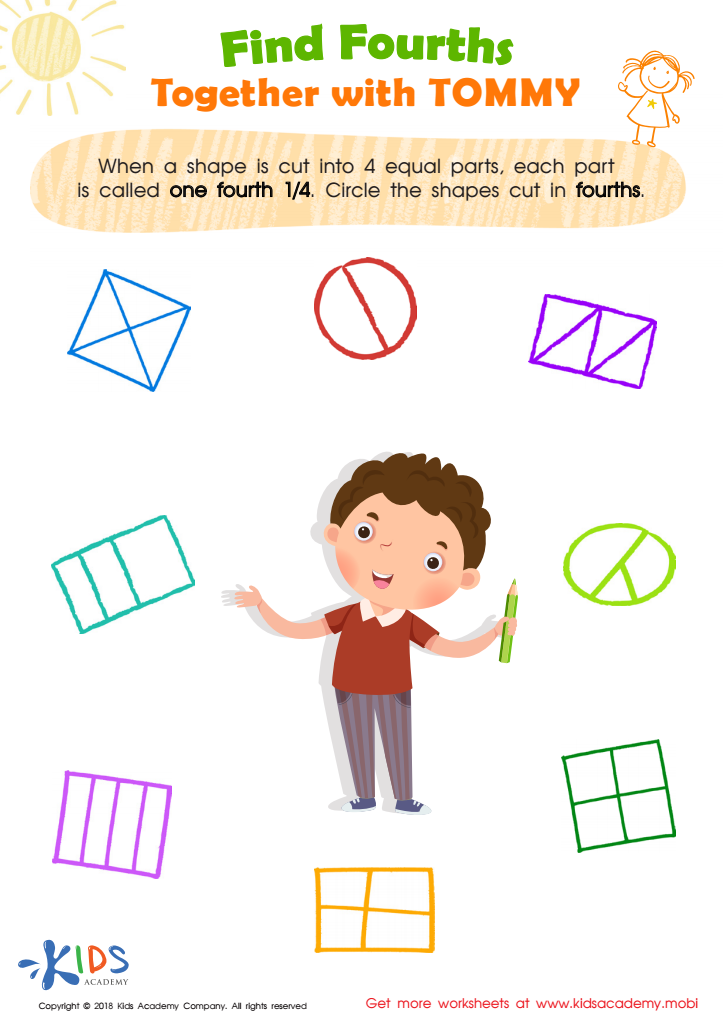

Find Fourths Together with Tommy Worksheet
Caring about visual representation comprehension for children ages 3-7 is crucial as it significantly impacts their cognitive development, learning capabilities, and overall educational progression. At these ages, children are in the early stages of their educational journey and are rapidly developing their ability to interpret and understand the world around them. Visual representations like pictures, symbols, charts, and diagrams aid in this understanding by providing concrete illustrations of abstract concepts.
First, visual aids can help children grasp difficult ideas more effectively. For example, a picture of animals or a chart of numbers allows young children to make connections and better comprehend topics that might be too complex when presented in text alone. These visual representations translate text-based information into memorable and easily digestible chunks, enhancing memory retention.
Secondly, early exposure to visuals encourages observational skills and critical thinking. Children learn to analyze images, identify patterns, and make inferences based on what they see. This strengthens problem-solving abilities and fosters creativity.
Lastly, in our increasingly visual world, being proficient in visual literacy ensures children can navigate and understand the plethora of symbolic information they will encounter. Parents and teachers play a critical role by incorporating diverse visual elements into learning, thus laying a strong foundation for academic success and everyday life skills.

 Assign to the classroom
Assign to the classroom
